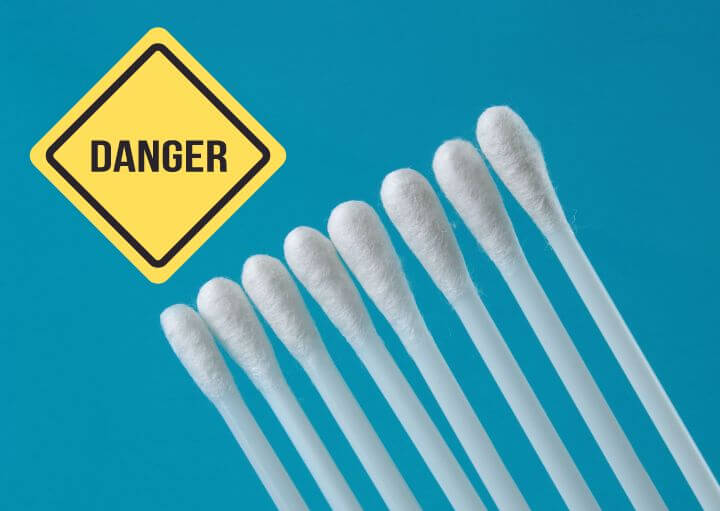Everyone produces wax and oils in their ear canals. There are glands within the ear canal that produce the wax and oil on a regular basis. Some individuals produce wax at a very fast pace while others produce a minimal amount. There are also different consistencies of the wax. Some individuals produce a very thick and sticky wax that builds up and blocks the ear canal. Other individuals produce a thinner sticky wax that tends to stay around the sides of the ear canal. There are also some individuals that produce a very hard wax that is similar to a pebble that sometimes adheres to the ear canal walls.
So, Are Q-Tips safe to use in my ears? The answer is NO! The reason is because you cannot see in your own ear canal and you cannot tell if you are going to push the debris and wax in your ear canal in deeper causing a blockage or even injury. The deeper the wax is pushed down into the ear canal, the more difficult it becomes to remove.
Wax can be removed by a hearing care professional that can see in your ear with an otoscope. There are 3 methods that are safe for the hearing care professional to use to remove the wax. The first method is by curette. The curette is used to help pull the wax and debris out manually. The second method is by suction. The suction is used to help pull the wax and debris out of the canal similar to a hose on a vacuum would. The third, and least appealing, method is by water irrigation. Water is squirted in the ear canal to help flush out the debris and wax. That method tends to be very messy and can be risky because if the professional can’t see beyond the wax to begin with, there is no way to make sure that water will not flow through any perforations that might be in that individual’s ear drum. To be safe, do not use Q-tips in the ear canal and see a professional to examine the ears and safely remove the wax.
Check out our hearing aid maintenance videos here www.medrxhearingcenter.com/maintenance/or give us a call at 727-584-9696 or email us with any questions about your hearing issues. We’d be glad to help. Click here

